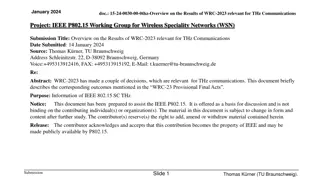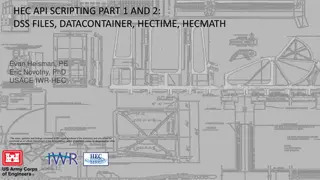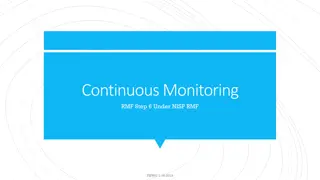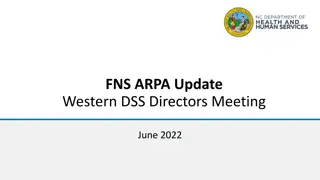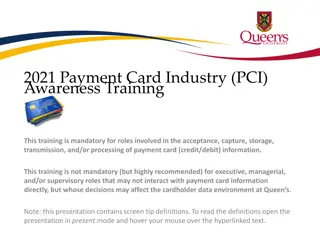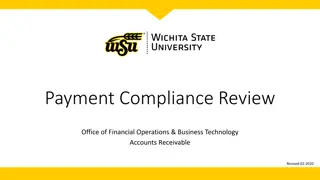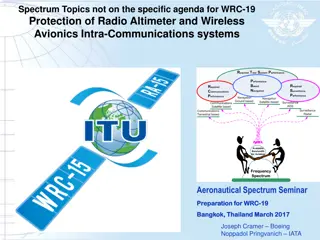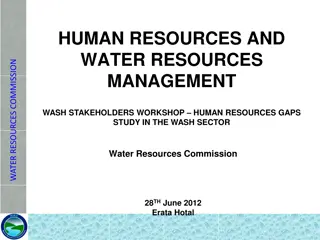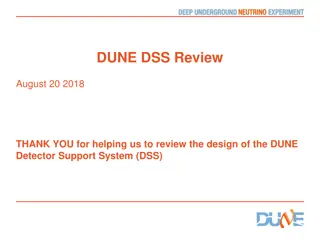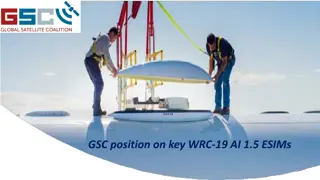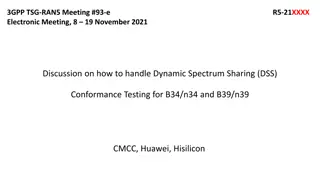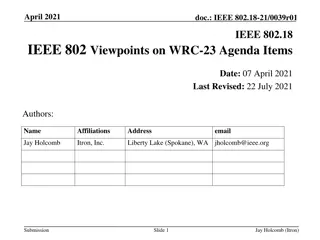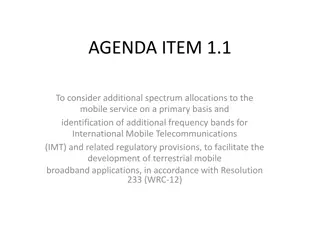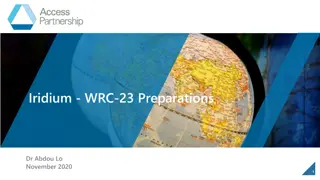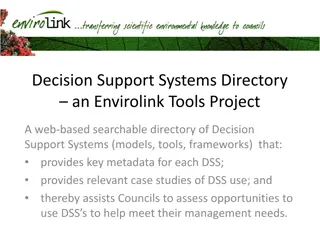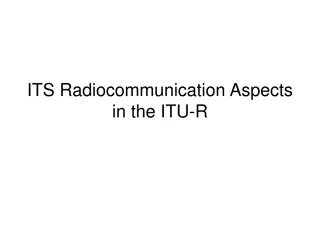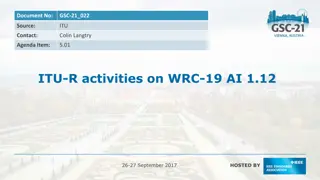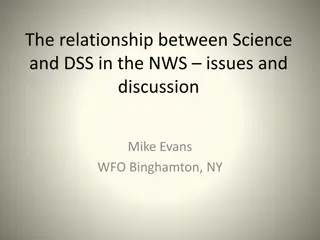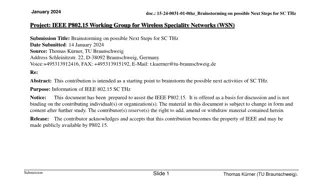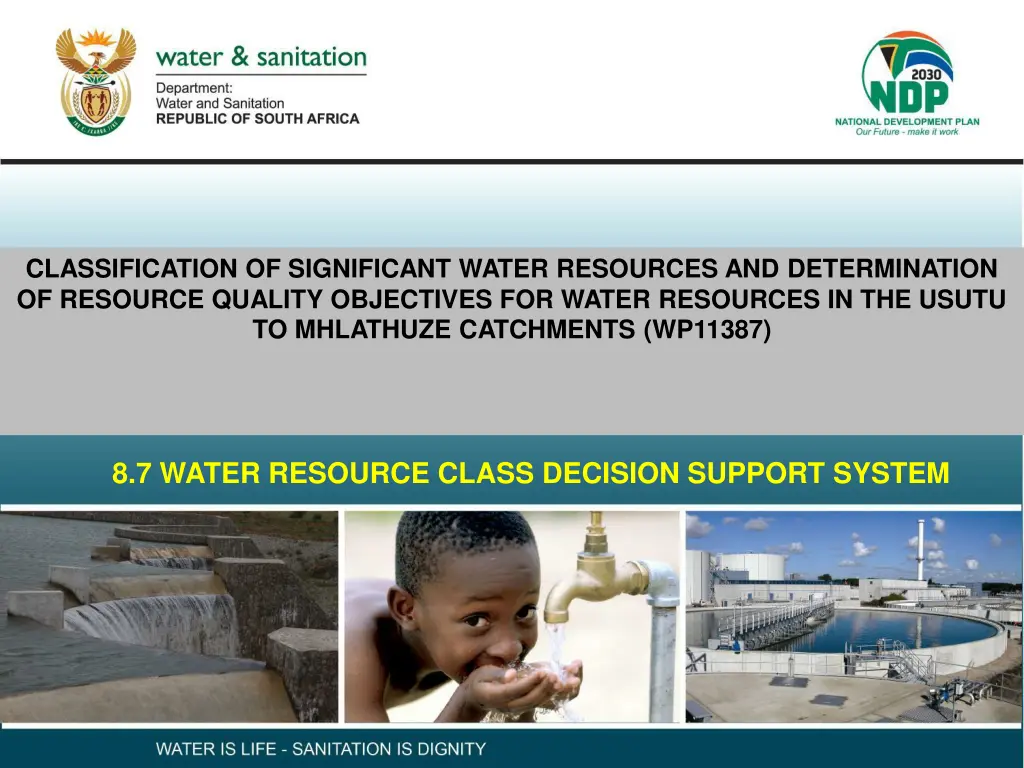
Water Resource Class Decision Support System Overview
Explore the Water Resource Class Decision Support System (WRC-DSS) developed for the Usutu to Mhlathuze catchments. The system calculates water resource classes, applies Multi-Criteria Analysis techniques, and assesses scenario consequences based on ecological, ecosystem services, and economic factors. Understand how the WRC-DSS aids in determining resource quality objectives and classification of significant water resources.
Download Presentation

Please find below an Image/Link to download the presentation.
The content on the website is provided AS IS for your information and personal use only. It may not be sold, licensed, or shared on other websites without obtaining consent from the author. If you encounter any issues during the download, it is possible that the publisher has removed the file from their server.
You are allowed to download the files provided on this website for personal or commercial use, subject to the condition that they are used lawfully. All files are the property of their respective owners.
The content on the website is provided AS IS for your information and personal use only. It may not be sold, licensed, or shared on other websites without obtaining consent from the author.
E N D
Presentation Transcript
CLASSIFICATION OF SIGNIFICANT WATER RESOURCES AND DETERMINATION OF RESOURCE QUALITY OBJECTIVES FOR WATER RESOURCES IN THE USUTU TO MHLATHUZE CATCHMENTS (WP11387) 8.7 WATER RESOURCE CLASS DECISION SUPPORT SYSTEM
Water Resource Class Decision Support System (WRC-DSS) Andrew Birkhead
3 BACKGROUND TO THE WRC-DSS The Water Resource Class Decision Support System (WRC-DSS) has been developed & refined over time, largely by WRP (late Pieter van Rooyen). WRC-DSS incorporated four linked excel files and ~30 worksheets A refined DSS contains: o single MS excel file running macros for calculations (VBA) rather than cell-based formulae; o this makes it modular for easier set-up and data population for a range of catchment configurations that include any number of Resource Units (RUs) within delineated Units of Analysis (IUA); o it is simple to use: only two main data input & results worksheets
4 PURPOSES OF THE WRC-DSS Two primary purposes: 1. Calculate Water Resource Class (I to III) for each IUA, which are defined by the distribution of Ecological Categories (A to F) assigned to RUs in an IUA - termed the Catchment configuration Classes are determined for various scenarios: PES, REC, operational scenarios, etc. Scenario numbering not strictly followed, as definition of scenarios changes between rivers and estuaries.
5 COMPUTING THE WATER RESOURCE CLASS (FOR A SCENARIO) Catchment configuration Forestry Protected area B A/B Streamflow reduction Rural B Irrigation Rating rules: C D Dams D Return flows Urban E C/D Industry Water Resource Class II EWR site Estuary
6 PURPOSES OF THE WRC-DSS 2. Apply Multi-Criteria Analysis (MCA) techniques to give an integrated assessment of scenario consequences from four components: Best = 1 Ecology Ecosystem Services Economic: o Economic indicator (e.g. GDP) o Employment An integrated grading (or ranking) from best (1) to worst (0) provides the balance between these four components Worst = 0
7 MULTI-CRITERIA ANALYSIS MCA is appropriate for comparing alternatives when the consequences, or outcomes, are expressed using different variables: Weightings can be changed (per IUA) Ecological consequences: scored according to the degree that the REC is met, with the REC set to 100%. Ecosystem Services: scored relative to the present state or Baseline, with the Baseline set to 1.0. Economic indicator assesses change in monetary terms, i.e. GDP - relative to Baseline set to 1.0. Employment assesses the change in job opportunities from Baseline set to 1.0. 50% ecology 50% socio- economic The integrated grading of scenarios allows for weighting scores from these four components, and two methods of ranking, viz: rank order (with average); normalised score (recommended for use)
8 MULTI-CRITERIA ANALYSIS Graphical output from the MCA for IUA W13 using traffic plots , which display the graded scenarios per component and as an integrated normalised score (0 to 1) Changing weightings may change score
9 WRC-DSS Based on the integrated gradings for the scenarios and the WRCs, the WRC-DSS is used to inform Target Ecological Categories (TECs) for the relevant RU, and hence the Water Resource Class for the IUA. +

